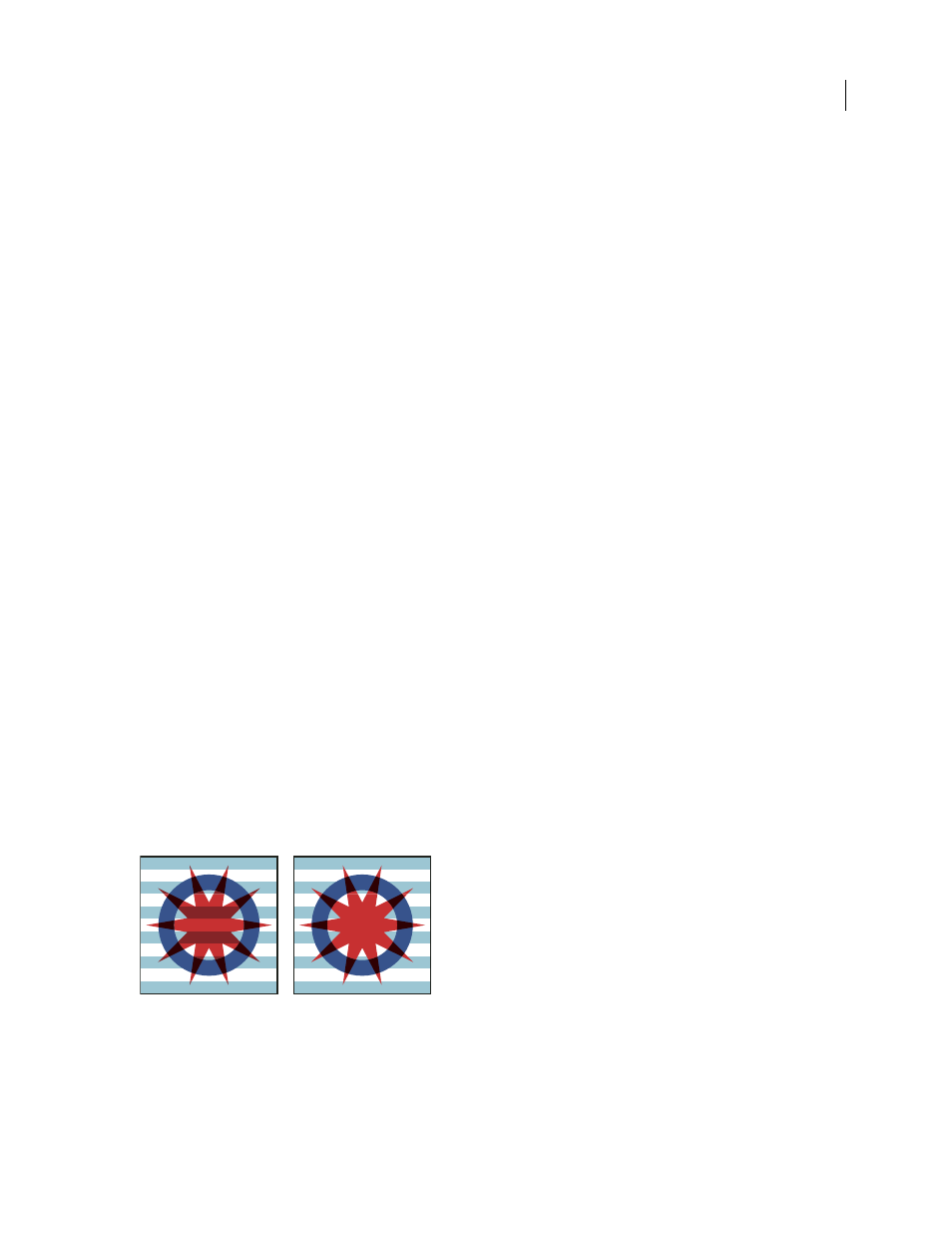Isolate blending modes – Adobe InDesign CS3 User Manual
Page 409

INDESIGN CS3
User Guide
402
multiplied. This is useful for adding shadows to artwork. Painting with pure black or white results in pure black or
white.
Color Dodge
Brightens the base color to reflect the blend color. Blending with black produces no change.
Color Burn
Darkens the base color to reflect the blend color. Blending with white produces no change.
Darken
Selects the base or blend color—whichever is darker—as the resulting color. Areas lighter than the blend
color are replaced, and areas darker than the blend color do not change.
Lighten
Selects the base or blend color—whichever is lighter—as the resulting color. Areas darker than the blend
color are replaced, and areas lighter than the blend color do not change.
Difference
Subtracts either the blend color from the base color or the base color from the blend color, depending on
which has the greater brightness value. Blending with white inverts the base color values; blending with black
produces no change.
Exclusion
Creates an effect similar to, but lower in contrast than, the Difference mode. Blending with white inverts
the base color components. Blending with black produces no change.
Hue
Creates a color with the luminance and saturation of the base color and the hue of the blend color.
Saturation
Creates a color with the luminance and hue of the base color and the saturation of the blend color.
Painting with this mode in an area with no saturation (gray) produces no change.
Color
Creates a color with the luminance of the base color and the hue and saturation of the blend color. This
preserves the gray levels in the artwork, and is useful for coloring monochrome artwork and for tinting color
artwork.
Luminosity
Creates a color with the hue and saturation of the base color and the luminance of the blend color. This
mode creates an inverse effect from that of the Color mode.
Note: Avoid applying the Difference, Exclusion, Hue, Saturation, Color, and Luminosity blending modes to objects with
spot colors; doing so can add unwanted colors to a document. For more information, see “Best practices when creating
transparency” on page 410.
Isolate blending modes
When you apply a blending mode to an object, its colors blend with all objects beneath it. If you want to limit the
blending to specific objects, you can group those objects and then apply the Isolate Blending option to the group.
The Isolate Blending option confines the blending to within the group, preventing objects beneath the group from
being affected. (It is useful for objects that have a blending mode other than Normal applied to them.)
Group (star and circle) with Isolate Blending option deselected (left) compared to selected (right)
